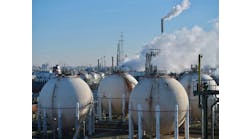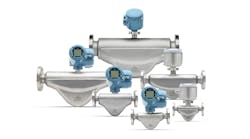Continuous emissions monitoring systems (CEMS) have come a long way since the U.S. Congress first articulated performance standards for new stationary sources back in the 1970s. Today, power producers as well as the keepers of other industrial-scale combustion processes worldwide must continuously measure and report the output of nitrogen and sulfur oxides, carbon monoxide and other potentially harmful combustion byproducts, and now they have at their disposal a range of solutions for doing so.
To learn more about the broad range of CEMS technologies available—and how to choose among them—we caught up with Phil Zyskowski, market application engineer, SICK.
Q: SICK has been in the CEMS and gas analysis business for decades and now offers a full breadth of solutions. How did the organization first get into the gas analysis business?
Market Application Engineer,
SICK
A: SICK AG was founded in 1946 in post-war Germany by Erwin Sick, an inventor who was fascinated by optics and light. He used optical principles to create solutions with safety and environmental applicability, and one of the early ones was a system for measuring dust particles coming from industrial stacks. That first CEMS monitor was soon followed by spectrometers for measuring gas composition, notably the nitrous oxides that were among the first pollutants required to be monitored by the Clean Air Act.
Q: Are there different requirements for CEMS solutions if we’re talking about power generation vs. other industries like chemicals or refining?
A: Power generators were certainly the first ones to be regulated by the Clean Air Act, and back then, we were talking primarily about coal-fired plants, where general-purpose analyzers fit the bill. But when you move into chemical, petrochemical and refinery applications, there are different electrical requirements because of explosion hazards—usually a minimum of Class I, Division 2, or in some instances, Class I, Division 1 ratings.
So, the applications are a bit trickier, but we have solutions that include purged enclosures and intrinsically safe or non-incendive components. The wavelength of light used, whether ultraviolet (UV) or near infrared (NIR), will also depend on what gas components need to be measured.
Q: How would you characterize the current installed base of CEMS analyzers across the U.S.? And do other regions have similar fleets?
A: That’s an interesting question because not all countries or regions chose the same route. In particular, the U.S. chose to pursue dilution extractive systems that pipe a sample down from the middle of the stack into an analyzer shelter on the ground, where the gas sample goes through a series of filters and sample conditioning steps before analysis. Transporting the sample takes significant time, plus there’s always the chance that the sample that finally reaches the analyzer is no longer representative of what’s in the stack.
Because of the lead role that the U.S. took with Clean Air Act regulations, a number of other countries reference U.S standards—including Canada, Mexico, China and Saudi Arabia—and have evolved their CEMS practices along a similar path.
Germany, however, is one of the European countries where, instead of extractive techniques, in situ, or “in place,” methods were developed because of their greater simplicity and lower cost. These probe-based and cross-stack systems measure the gas while it’s still in the stack, greatly reducing system complexity, analysis lag time and the likelihood of an unrepresentative sample.
Q: What other factors need to be considered when it comes to settling on a particular approach from among the cold and dry, hot and wet extractive and in situ options?
A: We manufacture both in situ and extractive systems, but our preferred approach is always to use in situ, unless we can’t for some reason. One showstopper that might rule out in situ is very tight quarters, where the customer wants a sample taken. The head of an extractive probe might only be the size of a shoebox—with the main analyzer positioned in an enclosure at a distance—but an in situ probe head might be five times that size. Other issues that might preclude in situ methods are very high dust loads or temperature.
Our next best approach is to use what we call a “hot wet” extractive technique. This construction that we invented allows us to take the sample in without having to put it through a chiller. This eliminates the possibility that gas components of interest drop out of the sample with the condensate, as well as some extra system components that are usually maintenance intensive—pumps, chillers and filters.
Finally, if neither of those two approaches will work, we go with the tried and true “cold dry” method. In the U.S., there's familiarity with it. Sometimes, too, the customer wants to measure some more exotic gas, and cold/dry analyzers offer options beyond UV or nondispersive infrared (NDIR).
Q: Given the increasing pressure on industry to account for and reduce greenhouse gas emissions, it seems reporting on carbon dioxide and other greenhouse gases could be in our future. Are any of these solutions more flexible when it comes to adding new analyses to the mix?
A: In the case of in situ, another gas measurement would likely entail a separate analyzer probe that would require a separate stack penetration for a single probe or cross-duct beam. This is one situation where an extractive system might offer more flexibility; the user may be able to simply add another optical bench module (NDIR, in the case of carbon dioxide) to the existing analyzer setup.
Q: All other things being equal, an in situ system would seem to have the upper hand when it comes to initial cost, design and installation effort. What sorts of savings are we talking about when it comes to the full system lifecycle?
A: We were recently at a EPRI conference and one of the integrator presenters did an analysis on in situ vs. extractive CEMS over the 10-year lifecycle of a typical analyzer. The number they reported was a savings of $1 million for the in situ route. This takes into account the initial capital and installation costs, operating expenses and consumables over that time. Much of U.S. industry remains comfortable with extractive methods—but if they can go in situ, they’re looking at a very strong economic incentive.




